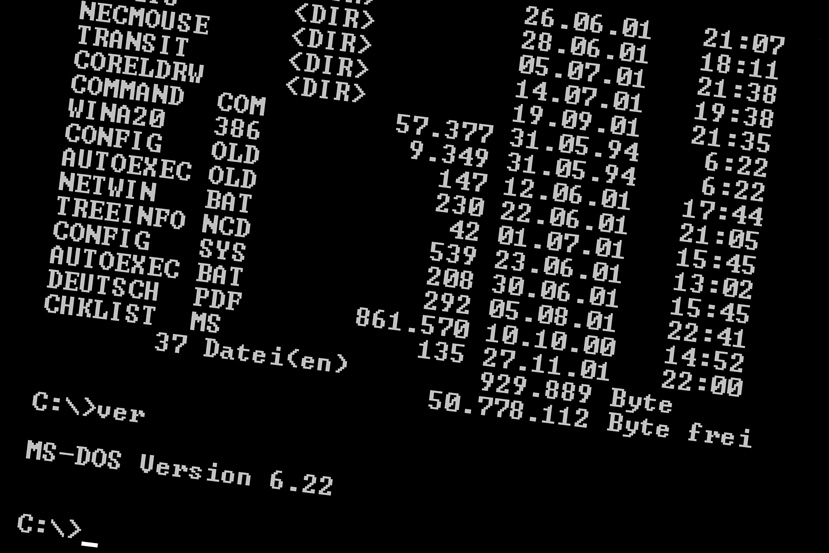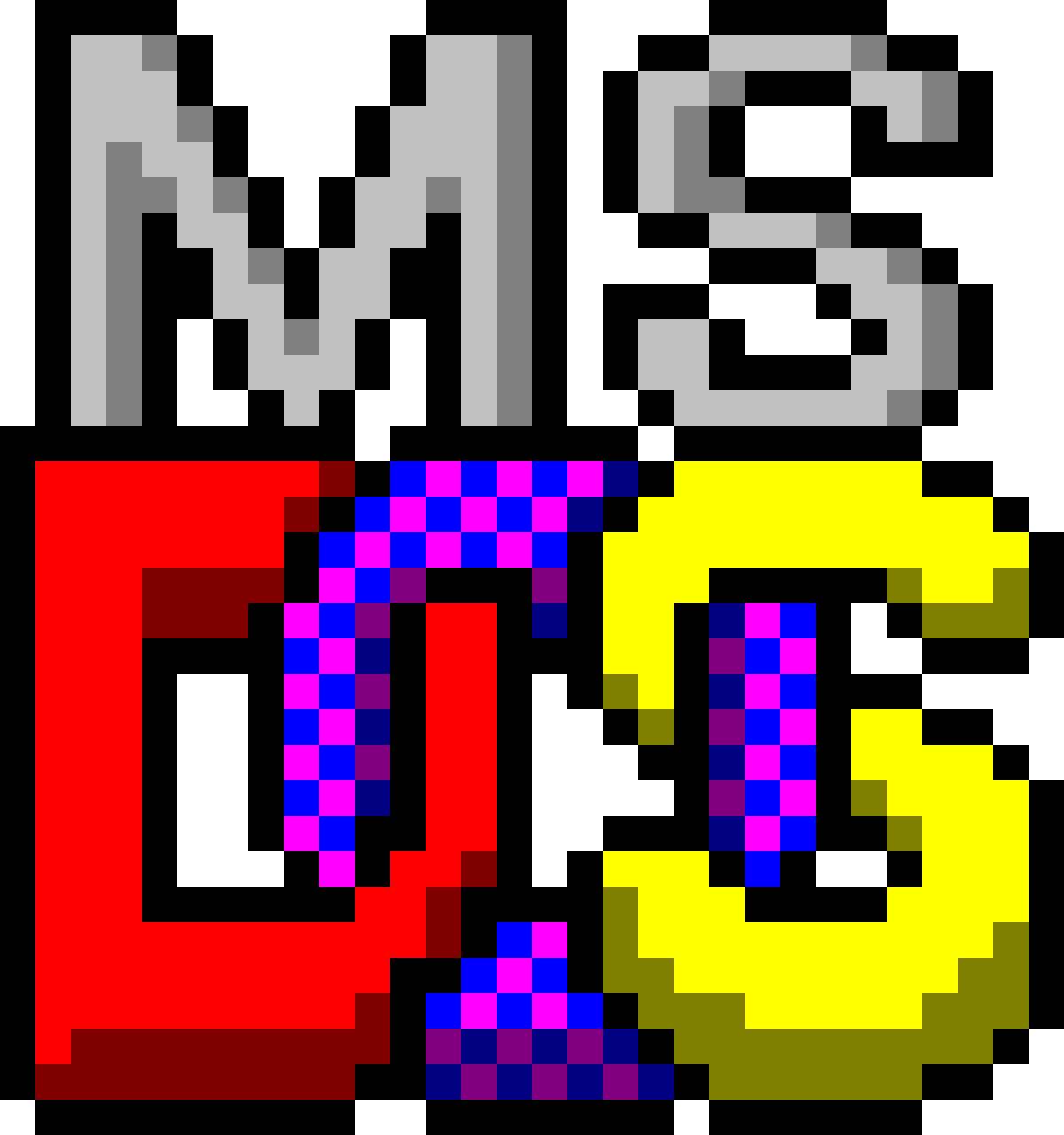Ever wondered how computers communicated with us before the sleek interfaces of today? The answer lies in DOS, a disk operating system that reigned supreme, a testament to the ingenuity of early computing.
The world of computing has drastically transformed over the past few decades, but the echoes of earlier systems still reverberate in the digital infrastructure we rely on today. Among those foundational technologies, DOS, or Disk Operating System, holds a significant place. While the term "disk operating system" is generic and applicable to various systems, in common parlance, particularly within the realm of x86 and IBM PC compatibles, "DOS" usually refers to a specific family of operating systems that powered the personal computing revolution.
DOS wasnt conceived as a monolithic entity sold directly to consumers. Instead, it emerged as a solution tailored for small system builders, the original equipment manufacturers (OEMs) who pieced together PC compatibles from readily available off-the-shelf components. These OEMs needed a reliable operating system to make their machines functional, and DOS filled that crucial gap. Several versions of DOS were developed, each with its unique characteristics and target audience.
- Joaquim Valente Unveiling His Life Story Wikipedia Deep Dive
- Unveiling The Lane Frost Friends A Deep Dive Into Bonds
Within this "DOS family," one member rose to prominence: MS-DOS, or Microsoft Disk Operating System. It became the dominant operating system for IBM PC compatibles throughout the 1980s, a period that saw the explosive growth of personal computing. MS-DOS provided the essential interface between the computer's hardware and the software applications users wanted to run. Its text-based command-line interface, though seemingly arcane by today's standards, allowed users to manage files, execute programs, and interact with the computer's core functions.
However, the reign of MS-DOS was not to last forever. As graphical user interfaces (GUIs) became more sophisticated and powerful, they began to offer a more intuitive and user-friendly computing experience. Operating systems like Windows, with their point-and-click interfaces, gradually eclipsed DOS. Eventually, Windows became the primary operating system for most PCs, pushing DOS into the background. The transition was gradual, however, with early versions of Windows even relying on DOS as their underlying foundation.
The way users interacted with DOS was through commands. These commands could be either built-in functions of the operating system itself, offering basic file management or system utilities, or they could be external programs, executable files residing on the disk. The user would type a command at the command prompt (typically "C:\>"), and the operating system would interpret and execute it. This command-line interface, while requiring users to learn specific commands, gave them a high degree of control over the system.
- Diddys Birthday Facts Significance Celebration Impact
- Unveiling Adam Sandlers Wife Her Role Beyond Grown Ups Films
The initial versions of DOS were relatively rudimentary. The first version, for example, supported a simple file system and limited directories to a maximum of eight files each. This restriction seems almost unimaginable in today's world of terabyte drives and millions of files, but it was a necessary limitation given the hardware constraints of the time. Despite its limitations, this first version of DOS laid the groundwork for the more sophisticated versions that would follow.
Subsequent versions of DOS introduced significant improvements. One crucial advancement was the support for hard drives. This allowed for vastly larger storage capacities compared to the floppy disks that were prevalent at the time. The introduction of hierarchical directories was another game-changer, enabling users to organize their files into a tree-like structure, making it far easier to manage large amounts of data. Improved file handling commands also enhanced the user experience, making it easier to copy, move, rename, and delete files.
As networks became more common, DOS evolved to incorporate networking capabilities. Later versions added support for networking, allowing PCs to connect to each other and share resources. Another important enhancement was improved memory management. Specifically, DOS began utilizing the high memory area (HMA), a region of memory above the conventional 640KB limit that could be used to load portions of the operating system or applications, freeing up more conventional memory for programs to run. This was a crucial optimization, as memory was a scarce resource in early PCs.
Even though modern PCs overwhelmingly run Windows or other operating systems without directly interacting with DOS, the spirit of DOS lives on. Within the Windows environment, users can still access the command prompt, a text-based interface that allows them to execute DOS commands. This capability can be useful for various tasks, from troubleshooting network issues to performing advanced file management operations. The commands are mostly same, if you are familiar with linux and windows command prompt, then they are almost same with similar functions.
Many retro-gaming enthusiasts actively seek out ways to experience classic DOS games on their modern PCs. This often involves using emulators like DOSBox, which create a virtual DOS environment within Windows or other operating systems. These emulators allow users to run older DOS games that would otherwise be incompatible with modern hardware and software. The availability of free DOS games, along with videos and online play options, has helped to preserve the legacy of these classic titles.
There are numerous online forums and resources dedicated to helping users run DOS games on modern PCs. These forums provide instructions, troubleshooting tips, and compatibility information, making it easier for enthusiasts to relive the gaming experiences of the past. The fact that a vibrant community continues to support and celebrate DOS gaming is a testament to the enduring appeal of these classic games.
In conclusion, while DOS may no longer be the dominant operating system it once was, its impact on the history of computing is undeniable. It played a crucial role in the rise of the IBM PC and its compatibles, providing the foundation for countless applications and innovations. Even today, its legacy continues to resonate in the command prompt of Windows and the world of retro gaming. DOS represents a vital chapter in the ongoing story of how humans interact with computers.
| Category | Information |
|---|---|
| Operating System Family | DOS (Disk Operating System) |
| Key Versions | MS-DOS (Microsoft Disk Operating System), PC-DOS (IBM Personal Computer DOS), DR-DOS (Digital Research DOS), FreeDOS |
| Primary Usage Period | 1980s - early 1990s (dominance), continued use in embedded systems and retro computing |
| Interface Type | Command-Line Interface (CLI) |
| Architecture | x86 |
| File System (Early Versions) | FAT12 (File Allocation Table 12-bit) |
| File System (Later Versions) | FAT16, FAT32 |
| Memory Management | Conventional memory (640KB limit), Extended Memory (EMS), High Memory Area (HMA) |
| Key Features | File management, program execution, disk management, basic hardware control |
| Typical Commands | `DIR`, `COPY`, `DEL`, `FORMAT`, `CD`, `MD`, `RD` |
| Successors/Replacements | Microsoft Windows (initially built on top of DOS, later a standalone OS), OS/2 |
| Use in Modern Systems | Command Prompt in Windows, DOS emulators (e.g., DOSBox) for running legacy applications and games |
| Notable Hardware Supported | Floppy disks, hard drives, CGA/EGA/VGA graphics cards, various sound cards (e.g., Sound Blaster) |
| Programming Languages Used | Assembly language, C, BASIC |
| Advantages | Simple, lightweight, direct hardware access, low system requirements |
| Disadvantages | Limited memory management, lack of multitasking, command-line interface can be difficult for beginners, limited graphical capabilities |
| Related Concepts | BIOS, boot sector, device drivers |
| Legacy & Influence | Significant impact on the development of personal computing, influenced subsequent operating systems, remains relevant in retro computing and embedded systems |
DOS on Wikipedia
- Discover The Role Of A Zahn Mcclarnon Partner Today
- Andrew Deluca The Untold Story Of A Rising Innovator


